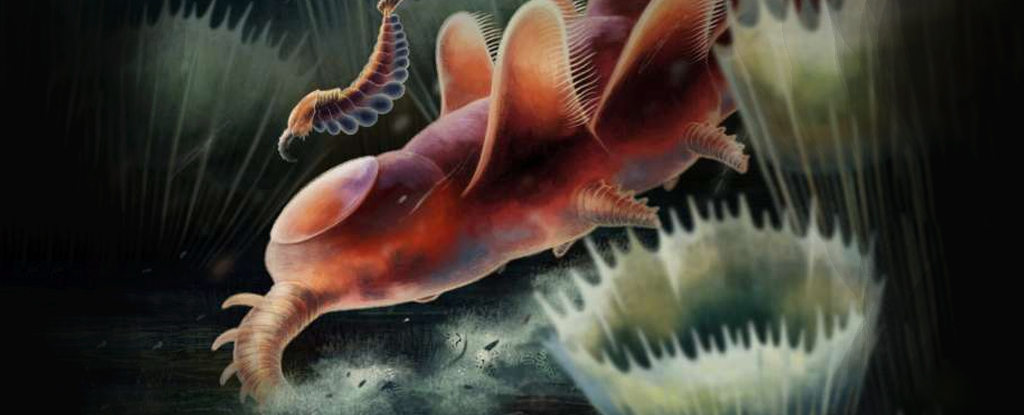Products You May Like
Researchers dug up two fossils belonging to ancient, flappy, and snouted arthropod relatives from what’s now a sheep field near Llandrindod Wells in Wales.
At only 13 and 3 millimeters (about 0.5 and 0.1 inches), these minuscule fossils from the Ordovician period may not seem like much to look at, but their familiarity kept paleontologists up at night.
The fossils look like opabiniids – extinct soft-bodied animals with snouts – yet they were dated to 40 million years after any known opabiniid fossil.
“Even the sheep know we are onto something special here, they usually come to watch,” says National Museum Wales paleontologist Lucy Muir.
Dinocaridida, which include opabiniids and radiodonta, were abundant after the Cambrian explosion; these creatures scuttled through an ocean-dominated Earth around 500 million years ago.
They looked a bit like trilobites, but all had a skirt of swim-flaps around their bodies; some had stalks and other weird head appendages. Opabinia earned the title of “weird wonder” with its confusing and otherworldly appearance thanks to five eyes and a bizarre clawed trunk.
Dinocaridida are thought to have descended from the same shared ‘parent’ group of animals to deuteropods, ancient arthropods that gave rise to classifications that would include spiders, insects, and crustaceans.
While the new finds shared several features with opabiniids, they had some striking differences, too.
University of Cambridge paleontologist Stephen Pates and colleagues named the largest of the newly described animals Mieridduryn bonniae, but have yet to classify the smaller one as they’re uncertain if it’s a different species or a younger form of the other.
“The size of the smaller specimen is comparable to some modern arthropod larvae – we had to take into account this possibility in our analyses,” explains Harvard University phylogeneticist Joanna Wolfe.
The tiniest specimen shared a fanned tail with blades similar to Opabiniids, and all had similar ‘legs’, but the new finds also had snouts – proboscises – with features seen in radiodonta.
Genetic analysis found that with current information, M. bonniae and friend could be more related to either group. If they are part of the opabiniids, these fossils extend this group’s known existence on Earth by 40 million years.
However, “the best-supported position for our Welsh specimens, whether considered as one or two species, were more closely related to modern arthropods than to opabiniid,” says Pates.
In this case, the proboscis may have resulted from a fusion between the first two head limbs that were reduced in later related animals to eventually become insect mouth flaps, while the radiodonts found a different use for these limbs, keeping them separate.
The fate of the first two head appendages is of particular interest because they have provided these scuttling life forms the ability to occupy so many different roles on Earth, from filter feeding to apex predators. So researchers credit them for the unmatched success of arthropods on Earth.
Either scenario would shed light on the evolution of arthropods which currently account for more than 85 percent of all known animal species on our planet. But we’ll need to discover more ‘weird wonders’ to clarify this mysterious branch on the tree of life.
This research was published in Nature Communications.
